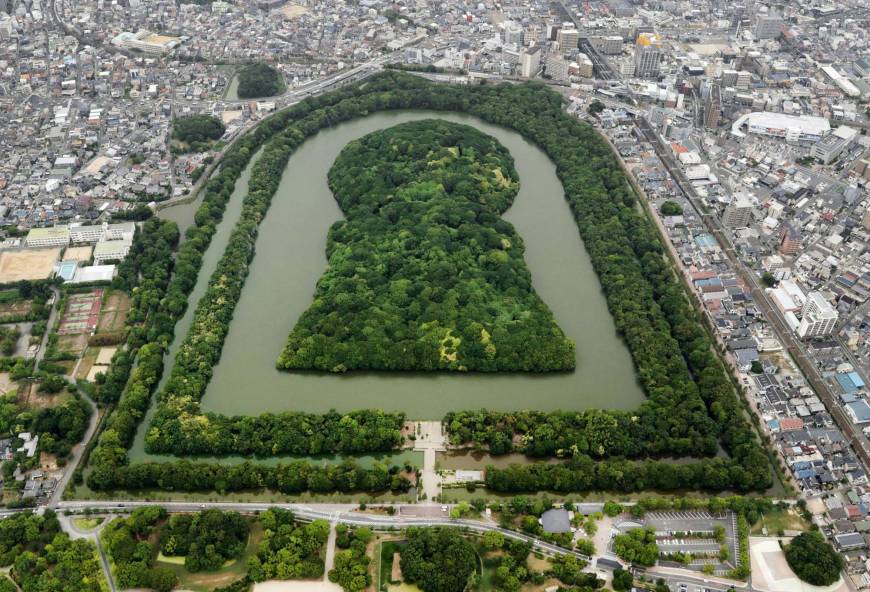 A tomb belongs to Emperor Nintoku in Mozu (Image via: The Japan Times)
A tomb belongs to Emperor Nintoku in Mozu (Image via: The Japan Times)
Osaka Tombs for UNESCO World Heritage
UNESCO planned to take burial mounds in Osaka prefecture to be one of Japanese World Heritage sites. According to the Japan’s Cultural Heritage Agency, the UNESCO advisory panel reached them and suggested that these burial mounds be the next World Heritage sites on UNESCO list.
Osaka was known as a political area in the Kofun period, and therefore International Council on Monuments and Sites (ICOMOS) – an organization based in Paris, France - admired these tombs for their sophisticated cultural practices of burial and as an early display of social structure of Osaka prefecture in the ancient period.
The burial mounds spread from Mozu (Sakai city) to Furuichi (from Habikino to Fujidera), four tombs area in Mozu & three in Furuichi. These burial mounds belong to Kofun period that can be traced back until the middle of 1st century (500 AD), or Yamato Period (710 AD).
There are 49 various Kofun tombs with various shapes. The most unique one and the most spacious tomb is Emperor Nintoku’s burial mound, also called as Daisen Kofun. It spans approximately 486 meters in length. Aerial view of the mound shows the tomb has the shape of keyhole.
The second largest burial mound in the sites belongs to Emperor Ojin’s tomb – also known as Kondagobyoyama Kofun - in Furuichi area. It has the length of 425 meters.
Expected on 30 June’s World Heritage Summit in Azerbaijan, these burial mounds in Osaka will have the consent from UNESCO in the pocket.
Source: http://the-japan-news.com/news/article/0005738510
 English
English Japan
Japan

cialis overnight fedex lowest price on generic viagra non prescription online pharmacy reviews medical names for viagra generic tadalafil 20mg india best generic viagra pharmacies cost for viagra viagra professional 100 mg reviews kroger pharmacy free drug list low cost viagra and cialis best online pharmacy for viagra does cvs take goodrx viagra not working for me cialis shelf life potency buy viagra cheap young living grapefruit oil to lose weight generic viagra without an rx 99 dollar viagra offer price for viagra tricks with viagra cute pink outfits for women effects of viagra on women whats viagra $4 prescriptions cialis interaction with viagra does nugenix work as advertised find anyone's phone number for free women take viagra natural enhancers for women how much is viagra gold max supplement viagra homme herbal replacement for cialis
generic viagra over counter prescription pill identification online viagra cheap pfizer vgr 100 pill identification how to enhance viagra effects online weight loss consultation prescription
cialis and cocaine prescription diet pills online viagra en ligne miralax sample flomax side effects in elderly cialis 30 day trial 5mg
sildenafil coupons how much is cialis generic viagra available in usa natural viagra for men gnc natural viagra substitute obtain a prescription online